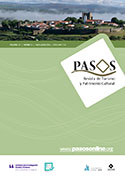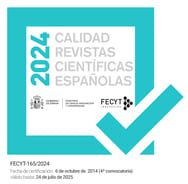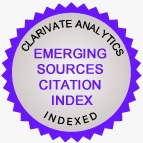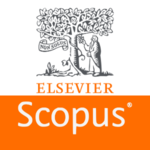Turismo con especies en peligro de extinción: Análisis bibliométrico y narrativa literaria
DOI:
https://doi.org/10.25145/j.pasos.2025.23.037Palabras clave:
turismo, especies el peligro, conservación, turismo sostenible, bibliometría, árbol de la ciencia, fauna silvestreResumen
El turismo es uno de los principales actores económicos en el mundo; sin embargo, puede transformar entornos naturales con consecuencias para especies en peligro de extinción. Existen pocas revisiones relacionadas con la temática y no se encuentra estudios que abarquen una revisión literaria y análisis bibliométrico sobre la estructura intelectual en la relación turismo y especies en peligro de extinción. La metodología seguida tomó las producciones disponibles en Web-of-Science y Scopus, incluyendo 298 documentos, realizando un mapeo científico y una narrativa literaria basada en el algoritmo Tree of Science. Del análisis narrativo, se destacan 3 áreas temáticas preponderantes: efectos e impactos del turismo en especies en peligro de extinción; percepción de los impactos del turismo y; conservación responsable. El artículo tiene implicaciones en diferentes stakeholders del sector interesados en la temática y poder articular su desarrollo en la prevención de impactos negativos y aprovechamiento eficiente de los positivos.
Descargas
Datos de publicación
Perfil evaluadores/as N/D
Declaraciones de autoría
- Sociedad académica
- PASOS. Revista de Turismo y Patrimonio Cultural
- Editorial
- Instituto Universitario de Investigación Social y Turismo. Universidad de La Laguna (España) - Instituto Universitario da Maia ISMAI (Portugal)
Citas
Agüera, F. O., & Cuadra, S. M. (2016). El turismo como motor potencial para el desarrollo económico de zonas fronterizas en vías de desarrollo. Un estudio de caso. In El Periplo Sustentable (Issue 31). https://doi.org/10.21854/eps.v0i31.2477
Anand, A., Chandan, P., & Singh, R. B. (2012). Homestays at Korzok: Supplementing Rural Livelihoods and Supporting Green Tourism in the Indian Himalayas. In Mountain Research and Development (Vol. 32, Issue 2, pp. 126–136). https://doi.org/10.1659/mrd-journal-d-11-00109.1
Apps, K., Dimmock, K., Lloyd, D. J., & Huveneers, C. (2017). Is there a place for education and interpretation in shark-based tourism? In Tourism Recreation Research (Vol. 42, Issue 3, pp. 327–343). https://doi.org/10.1080/02508281.2017.1293208
Aria, M., & Cuccurullo, C. (2017). bibliometrix : An R-tool for comprehensive science mapping analysis. Journal of Informetrics, 11(4), 959–975. https://doi.org/10.1016/j.joi.2017.08.007
Ballantyne, R., Packer, J., & Hughes, K. (2009). Tourists’ support for conservation messages and sustainable management practices in wildlife tourism experiences. In Tourism Management (Vol. 30, Issue 5, pp. 658–664). https://doi.org/10.1016/j.tourman.2008.11.003
Ballantyne, R., Packer, J., & Sutherland, L. A. (2011). Visitors’ memories of wildlife tourism: Implications for the design of powerful interpretive experiences. In Tourism Management (Vol. 32, Issue 4, pp. 770–779). https://doi.org/10.1016/j.tourman.2010.06.012
Barrera-Rodríguez, A. M., Duque-Oliva, E. J., & Vieira-Salazar, J. A. (2022). Actor engagement: origin, evolution and trends. Journal of Business & Industrial Marketing, ahead-of-print(ahead-of-print). https://doi.org/10.1108/JBIM-11-2021-0512
Bejder, L., Samuels, A., Whitehead, H., Gales, N., Mann, J., Connor, R., Heithaus, M., Watson-Capps, J., Flaherty, C., & Krützen, M. (2006). Decline in relative abundance of bottlenose dolphins exposed to long-term disturbance. Conservation Biology: The Journal of the Society for Conservation Biology, 20(6), 1791–1798. https://doi.org/10.1111/j.1523-1739.2006.00540.x
Bookbinder, M., Dinerstein, E., Rijal, A., Cauley, H., & Rajouria, A. (2008). Ecotourism’s Support of Biodiversity Conservation. Conservation Biology, 12(6), 1399–1404. https://doi.org/ https://doi.org/10.1111/j.1523-1739.1998.97229.x
Cisneros-Montemayor, A. M., Barnes-Mauthe, M., Al-Abdulrazzak, D., Navarro-Holm, E., & Rashid Sumaila, U. (2013). Global economic value of shark ecotourism: implications for conservation. In Oryx (Vol. 47, Issue 3, pp. 381–388). https://doi.org/10.1017/s0030605312001718
Cong, L., Wu, B., Morrison, A. M., Shu, H., & Wang, M. (2014). Analysis of wildlife tourism experiences with endangered species: An exploratory study of encounters with giant pandas in Chengdu, China. Tourism Management, 40, 300–310. https://doi.org/10.1016/j.tourman.2013.07.005
Croft, D. B. (2019). Walking in Each Other’s Footsteps: Do Animal Trail Makers Confer Resilience against Trampling Tourists? In Environments (Vol. 6, Issue 7, p. 83). https://doi.org/10.3390/environments6070083
Crowley-Cyr, L., Gershwin, L.-A., Bremser, K., Abraham, V., Moreno Martin, M. J., Carreño, M., & Wüst, K. (2022). Jellyfish risk communications: The effect on risk perception, travel intentions and behaviour, and beach tourism destinations. In Journal of Hospitality and Tourism Management (Vol. 51, pp. 196–206). https://doi.org/10.1016/j.jhtm.2022.03.002
D’Cruze, N., Niehaus, C., Balaskas, M., Vieto, R., Carder, G., Richardson, V. A., Moorhouse, T., Harrington, L. A., & Macdonald, D. W. (2018). Wildlife tourism in Latin America: taxonomy and conservation status. In Journal of Sustainable Tourism (Vol. 26, Issue 9, pp. 1562–1576). https://doi.org/10.1080/09669582.2018.1484752
Dobriyal, P., Badola, R., & Hussain, S. A. (2017). Social Preference of Local Communities Towards Wildlife Tourism in the Indian Himalayas. In Wilderness of Wildlife Tourism (pp. 113–128). https://doi.org/10.1201/9781315365817-7
Durán-Aranguren, D. D., Robledo, S., Gomez-Restrepo, E., Arboleda Valencia, J. W., & Tarazona, N. A. (2021). Scientometric Overview of Coffee By-Products and Their Applications. Molecules , 26(24), 7605. https://doi.org/10.3390/molecules26247605
Estevão, C., & Costa, C. (2020). Natural disaster management in tourist destinations: a systematic literature review. In European Journal of Tourism Research (Vol. 25, p. 2502). https://doi.org/10.54055/ejtr.v25i.417
Gallagher, A. J., Vianna, G. M. S., Papastamatiou, Y. P., Macdonald, C., Guttridge, T. L., & Hammerschlag, N. (2015). Biological effects, conservation potential, and research priorities of shark diving tourism. In Biological Conservation (Vol. 184, pp. 365–379). https://doi.org/10.1016/j.biocon.2015.02.007
García-Cegarra, A. M., & Pacheco, A. S. (2017). Whale-watching trips in Peru lead to increases in tourist knowledge, pro-conservation intentions and tourist concern for the impacts of whale-watching on humpback whales. In Aquatic Conservation: Marine and Freshwater Ecosystems (Vol. 27, Issue 5, pp. 1011–1020). https://doi.org/10.1002/aqc.2754
Gentner, D. (1988). Structure-mapping: A theoretical framework for analogy. In Readings in Cognitive Science (pp. 303–310). Elsevier. https://doi.org/10.1016/b978-1-4832-1446-7.50026-1
Gessa, S. J., & Rothman, J. M. (2021). The importance of message framing in rule compliance by visitors during wildlife tourism. In Conservation Science and Practice (Vol. 3, Issue 10). https://doi.org/10.1111/csp2.515
Glasser, D. B., Goldberg, T. L., Guma, N., Balyesiima, G., Agaba, H., Gessa, S. J., & Rothman, J. M. (2021). Opportunities for respiratory disease transmission from people to chimpanzees at an East African tourism site. American Journal of Primatology, 83(2), e23228. https://doi.org/10.1002/ajp.23228
Gonzáles-Mantilla, P., Gallagher, A., & León, C, Viannac, G. (2021). Challenges and conservation potential of shark-diving tourism in the Macaronesian archipelagos. Marine Policy, 131. https://doi.org/10.1016/j.marpol.2021.104632
Hanes, A., Kalema-Zikusoka, G., Svensson, M., & Hill, C. (2018). Assessment of Health Risks Posed by Tourists Visiting Mountain Gorillas in Bwindi Impenetrable National Park, Uganda. Primate Conservation, 32. https://www.researchgate.net/journal/Primate-Conservation-0898-6207
Hanson, J. H., Schutgens, M., & Baral, N. (2019). What explains tourists’ support for snow leopard conservation in the Annapurna Conservation Area, Nepal? In Human Dimensions of Wildlife (Vol. 24, Issue 1, pp. 31–45). https://doi.org/10.1080/10871209.2019.1534293
Hawkins, E., & Papworth, S. (2022). Little Evidence to Support the Risk–Disturbance Hypothesis as an Explanation for Responses to Anthropogenic Noise by Pygmy Marmosets (Cebuella niveiventris) at a Tourism site in the Peruvian Amazon. In International Journal of Primatology. https://doi.org/10.1007/s10764-022-00297-9
Kenworthy, J. M. (1988). historical review of tourism and wildlife conservation in East, Central and South Africa: the environmental impact. Exploitation of Animals in Africa: Proceedings of a Colloquium at the University of Aberdeen, March 1987/edited by Jeffrey C. Stone. https://agris.fao.org/agris-search/search.do?recordID=US201302055582
Köseoglu, M. A. (2020). Identifying the intellectual structure of fields: introduction of the MAK approach. Scientometrics, 125(3), 2169–2197. https://doi.org/10.1007/s11192-020-03719-8
Kovačić, S., Mărgărint, M. C., Ionce, R., & Miljković, Đ. (2020). What are the Factors affecting Tourist Behavior based on the Perception of Risk? Romanian and Serbian Tourists’ Perspective in the Aftermath of the recent Floods and Wildfires in Greece. In Sustainability (Vol. 12, Issue 16, p. 6310). https://doi.org/10.3390/su12166310
Krüger, O. (2005). The role of ecotourism in conservation: panacea or Pandora’s box? In Biodiversity and Conservation (Vol. 14, Issue 3, pp. 579–600). https://doi.org/10.1007/s10531-004-3917-4
Larm, M., Elmhagen, B., Granquist, S. M., Brundin, E., & Angerbjörn, A. (2018). The role of wildlife tourism in conservation of endangered species: Implications of safari tourism for conservation of the Arctic fox in Sweden. Human Dimensions of Wildlife, 23(3), 257–272. https://doi.org/10.1080/10871209.2017.1414336
Leiper, N. (1979). The framework of tourism: Towards a definition of tourism, tourist, and the tourist industry. Annals of tourism research, 6(4), 390-407. https://doi.org/10.1016/0160-7383(79)90003-3
Lemelin, H., Dawson, J., Stewart, E. J., Maher, P., & Lueck, M. (2010). Last-chance tourism: the boom, doom, and gloom of visiting vanishing destinations. In Current Issues in Tourism (Vol. 13, Issue 5, pp. 477–493). https://doi.org/10.1080/13683500903406367
Lepp, A., & Gibson, H. (2003). Tourist roles, perceived risk and international tourism. In Annals of Tourism Research (Vol. 30, Issue 3, pp. 606–624). https://doi.org/10.1016/s0160-7383(03)00024-0
Levy, S. J. (2002). Revisiting the marketing domain. European Journal of Marketing, 36(3), 299–304. https://doi.org/10.1108/03090560210417129
Liberati, A., Altman, D. G., Tetzlaff, J., Mulrow, C., Gøtzsche, P. C., Ioannidis, J. P. A., Clarke, M., Devereaux, P. J., Kleijnen, J., & Moher, D. (2009). The PRISMA statement for reporting systematic reviews and meta-analyses of studies that evaluate health care interventions: explanation and elaboration. Journal of Clinical Epidemiology, 62(10), e1–e34. https://doi.org/10.1016/j.jclinepi.2009.06.006
Maréchal, L., MacLarnon, A., Majolo, B., & Semple, S. (2016). Primates’ behavioural responses to tourists: evidence for a trade-off between potential risks and benefits. Scientific Reports, 6, 32465. https://doi.org/10.1038/srep32465
Markwell, K. (2018). An assessment of wildlife tourism prospects in Papua New Guinea. In Tourism Recreation Research (Vol. 43, Issue 2, pp. 250–263). https://doi.org/10.1080/02508281.2017.1420008
Matheson, M. D., Sheeran, L. K., Li, J.-H., & Steven Wagner, R. (2006). Tourist impact on Tibetan macaques. In Anthrozoös (Vol. 19, Issue 2, pp. 158–168). https://doi.org/10.2752/089279306785593810
Meza-Arce, M., Malpica-Cruz, L., Hoyos-Padilla, M., Mojica, F., Arredondo-García, M., Leyva, C., Zertuche-Chanes, R., & Santana-Morales, O. (2020). Unraveling the white shark observation tourism at Guadalupe Island, Mexico: Actors, needs and sustainability. Marine Policy, 119, 104056. https://doi.org/10.1016/j.marpol.2020.104056
Moral-Muñoz, J. A., Herrera-Viedma, E., Santisteban-Espejo, A., & Cobo, M. J. (2020). Software tools for conducting bibliometric analysis in science: An up-to-date review. Professioni Infermieristiche, 29(1). https://doi.org/10.3145/epi.2020.ene.03
Moreno, M. C. M. (2011). Turismo y producto turístico. Evolución, conceptos, componentes y clasificación. Visión Gerencial, 1, 135–158. https://www.redalyc.org/pdf/4655/465545890011.pdf
Morrison, C., Rounds, I., & Watling, D. (2012). Conservation and management of the endangered Fiji sago palm, Metroxylon vitiense, in Fiji. Environmental Management, 49(5), 929–941. https://doi.org/10.1007/s00267-012-9836-3
Muntifering, J. R., Linklater, W. L., Naidoo, R., !Uri-≠Khob, S., du Preez, P., Beytell, P., Jacobs, S., & Knight, A. T. (2021). Black rhinoceros avoidance of tourist infrastructure and activity: planning and managing for coexistence. In Oryx (Vol. 55, Issue 1, pp. 150–159). https://doi.org/10.1017/s0030605318001606
Murphy, S. E., Campbell, I., & Drew, J. A. (2018). Examination of tourists’ willingness to pay under different conservation scenarios; Evidence from reef manta ray snorkeling in Fiji. In PLOS ONE (Vol. 13, Issue 8, p. e0198279). https://doi.org/10.1371/journal.pone.0198279
Mutanga, C., Gandiwa, E., Muboko, N., & Chikuta, O. (2021). Sustainability of Wildlife Tourism: Tourist Perceptions on Threats to Wildlife Tourism in Two State Protected Areas in Zimbabwe. In African Journal of Hospitality, Tourism and Leisure (Issue 10(3), pp. 895–911). https://doi.org/10.46222/ajhtl.19770720-139
Nakamura, M., Hosaka, K., Itoh, N., & Zamma, K. (2015). Mahale Chimpanzees. Cambridge University Press. https://play.google.com/store/books/details?id=05lrCgAAQBAJ
Notaro, S., & Grilli, G. (2022). Assessing tourists’ preferences for conservation of large carnivores in the Italian Alps using a discrete choice experiment. In Journal of Environmental Planning and Management (Vol. 65, Issue 7, pp. 1261–1280). https://doi.org/10.1080/09640568.2021.1924124
Odeniran, P. O., Ademola, I. O., & Jegede, H. O. (2018). A review of wildlife tourism and meta-analysis of parasitism in Africa’s national parks and game reserves. Parasitology Research, 117(8), 2359–2378. https://doi.org/10.1007/s00436-018-5958-8
Organización Mundial de Turismo-OMT. (1991). Resoluciones de la conferencia internacional sobre estadísticas de viajes y turismo. https://webunwto.s3.eu-west-1.amazonaws.com/imported_images/30053/nice_sp.pdf
Papafitsoros, K., Panagopoulou, A., & Schofield, G. (2021). Social media reveals consistently disproportionate tourism pressure on a threatened marine vertebrate. In Animal Conservation (Vol. 24, Issue 4, pp. 568–579). https://doi.org/10.1111/acv.12656
Pickering, C. M., & Hill, W. (2007). Impacts of recreation and tourism on plant biodiversity and vegetation in protected areas in Australia. Journal of Environmental Management, 85(4), 791–800. https://doi.org/10.1016/j.jenvman.2006.11.021
Powell, R. B., & Ham, S. H. (2008). Can ecotourism interpretation really lead to pro-conservation knowledge, attitudes and behaviour? Evidence from the Galapagos islands. Journal of Sustainable Tourism, 16(4), 467–489. https://doi.org/10.1080/09669580802154223
Rahbari, M., Motahari, S., Behbahaninia, A., & Khadivi, S. (2019). Environmental Risk Assessment of Tourist Routes; the Case of Dohezar Forest Road, Iran. Plant Arch, 19, 78–86. http://www.plantarchives.org/SPL%20ISSUE%20SUPP%202,2019/15%20(78-86).pdf
Reindrawati, D., Rhama, B., & Hisan, U. C. (2022). Threats to Sustainable Tourism in National Parks: Case Studies from Indonesia and South Africa. African Journal of Hospitality, Tourism and Leisure., 11(3), 919–937. https://doi.org/10.46222/ajhtl.19770720.266
Reynolds, P. C., & Braithwaite, D. (2001). Towards a conceptual framework for wildlife tourism. Tourism Management, 22(1), 31–42. https://doi.org/10.1016/s0261-5177(00)00018-2
Robledo, S., Osorio, G., & Lopez, C. (2014). Networking en pequeña empresa: una revisión bibliográfica utilizando la teoria de grafos. Revista Vínculos, 11(2), 6–16. https://doi.org/10.14483/2322939X.9664
Ruesto, L. A., Sheeran, L. K., Matheson, M. D., Li, J.-H., & Steven Wagner, R. (2010). Tourist Behavior and Decibel Levels Correlate with Threat Frequency in Tibetan Macaques (Macaca thibetana) at Mt. Huangshan, China. In Primate Conservation (Vol. 25, Issue 1, pp. 99–104). https://doi.org/10.1896/052.025.0115
Sumarmi, Sumarmi, S., Bachri, S., Purwanto, P., Zubaidah, S., Shrestha, R. P., & Sholiha, A. W. (2022). Assessing Bedul Mangrove Ecotourism Using Green and Fair Strategy Empowerment to Fulfill SDGs 2030 Agenda for Tourism. In Environmental Research, Engineering and Management (Vol. 78, Issue 2, pp. 73–87). https://doi.org/10.5755/j01.erem.78.2.31006
Usui, R., Sheeran, L. K., Asbury, A. M., & Blackson, M. (2021). Impacts of the COVID-19 pandemic on mammals at tourism destinations: a systematic review. Mammal Review, 51(4), 492–507. https://doi.org/10.1111/mam.12245
Uyarra, M. C., Côté, I. M., Gill, J. A., Tinch, R. R. T., Viner, D., & Watkinson, A. R. (2005). Island-specific preferences of tourists for environmental features: implications of climate change for tourism-dependent states. Environmental Conservation, 32(1), 11–19. https://doi.org/10.1017/s0376892904001808
Valencia-Hernandez, D. S., Robledo, S., Pinilla, R., Duque-Méndez, N. D., & Olivar-Tost, G. (2020). SAP algorithm for citation analysis: An improvement to tree of Science. Ingeniería E Investigación, 40(1). https://doi.org/10.15446/ing.investig.v40n1.77718
Vianna, G., Meekan, M., Pannell, D., Marsh, S., & Meeuwig, J. (2012). Socio-economic value and community benefits from shark-diving tourism in Palau: A sustainable use of reef shark populations. Biological Conservation, 145(1), 267–277. https://doi.org/10.1016/j.biocon.2011.11.022
Vieira Salazar, J. A., Echeverri Rubio, A., & Mejía-Franco, N. (2021). Efectos socio-espaciales del turismo en procesos de gentrificación: análisis bibliométrico y de literatura. Revista venezolana de gerencia, 26(5 Edición Especial), 540–562. https://doi.org/10.52080/rvgluz.26.e5.35
Wallis, J., & Rick Lee, D. (1999). Primate Conservation: The Prevention of Disease Transmission. International Journal of Primatology, 20(6), 803–826. https://doi.org/10.1023/a:1020879700286
Walters, L., Donnelly, M., Sacks, P., & Campbell, D. (2017). Lessons Learned from Living Shoreline Stabilization in Popular Tourist Areas. In Living Shorelines (pp. 235–248). https://doi.org/10.1201/9781315151465-15
Wang, L.-E., Zeng, Y., & Zhong, L. (2017). Impact of Climate Change on Tourism on the Qinghai-Tibetan Plateau: Research Based on a Literature Review. In Sustainability (Vol. 9, Issue 9, p. 1539). https://doi.org/10.3390/su9091539
Weiler, B., Gstaettner, A. M., & Scherrer, P. (2021). Selfies to die for: A review of research on self-photography associated with injury/death in tourism and recreation. In Tourism Management Perspectives (Vol. 37, p. 100778). https://doi.org/10.1016/j.tmp.2020.100778
White, H. D., & Griffith, B. C. (1981). Author cocitation: A literature measure of intellectual structure. Journal of the American Society for Information Science. American Society for Information Science, 32(3), 163–171. https://doi.org/10.1002/asi.4630320302
Worrell, T., Admiraal, R., Bateman, P. W., & Fleming, P. A. (2017). Are tourism and conservation compatible for “island tame” species? In Animal Conservation (Vol. 20, Issue 2, pp. 155–163). https://doi.org/10.1111/acv.12301
Wright, P. C., Andriamihaja, B., King, S. J., Guerriero, J., & Hubbard, J. (2014). Lemurs and tourism in Ranomafana National Park, Madagascar. In Primate Tourism (pp. 123–146). https://doi.org/10.1017/cbo9781139087407.010
Xia, W., Ren, B., Li, Y., Hu, J., He, X., Krzton, A., Li, M., & Li, D. (2017). Behavioural Responses of Yunnan Snub-Nosed Monkeys (Rhinopithecus bieti) to Tourists in a Provisioned Monkey Group in Baimaxueshan Nature Reserve. In Folia Primatologica (Vol. 87, Issue 6, pp. 349–360). https://doi.org/10.1159/000454922
Zuluaga, M., Robledo, G., Osorio-Zuluaga, G. A., Yathe, L., Gonzalez, D., & Taborda, G. (2016). Metabolomics and pesticides: systematic literature review using graph theory for analysis of references. Nova, 14(25), 121–138.
Zuluaga, M., Robledo, S., Arbelaez-Echeverri, O., Osorio-Zuluaga, G. A., & Duque-Méndez, N. (2022). Tree of Science - ToS: A Web-Based Tool for Scientific Literature Recommendation. Search Less, Research More! Issues in Science and Technology Librarianship, 100. https://doi.org/10.29173/istl2696
Descargas
Publicado
Cómo citar
Número
Sección
Licencia
Derechos de autor 2024 Jaime Andres Vieira Salazar, Jessica Nataly Navia Aguirre, Alejandro Echeverri Rubio, José Miguel López Zuluaga

Esta obra está bajo una licencia internacional Creative Commons Atribución-NoComercial-SinDerivadas 4.0.
Confirmo que el trabajo es original (de mi/nuestra autoría), y que no se someterá a otras revistas o publicaciones hasta la resolución definitiva del proceso de revisión en PASOS, RTPC.
Autorizo la publicación de mi trabajo por PASOS, RTPC de acceso abierto y gratuito en cualquiera de los formatos que estime oportunos, por un plazo indeterminado y a título de colaboración no remunerada.
Asimismo, el/los autor/es entiende/n que el trabajo publicado podrá vincularse o depositarse en cualquier servidor o ser incluido en otras publicaciones (republicación), siempre y cuando el nuevo lugar y/o la nueva edición referencie la publicación original y reconozca la autoría y la propiedad del copyright de las publicaciones de PASOS RTPC.
Los/as autores/as entienden que se realizará una comprobación de plagio-autoplagio, pudiendo retirarse el artículo en cualquier momento del flujo editorial










